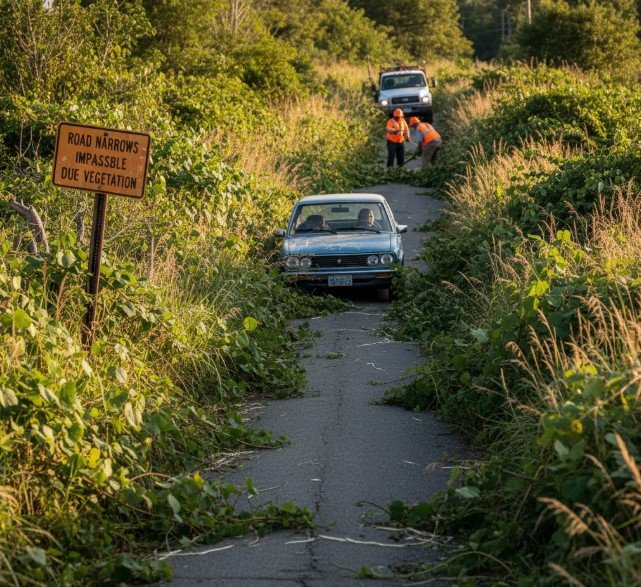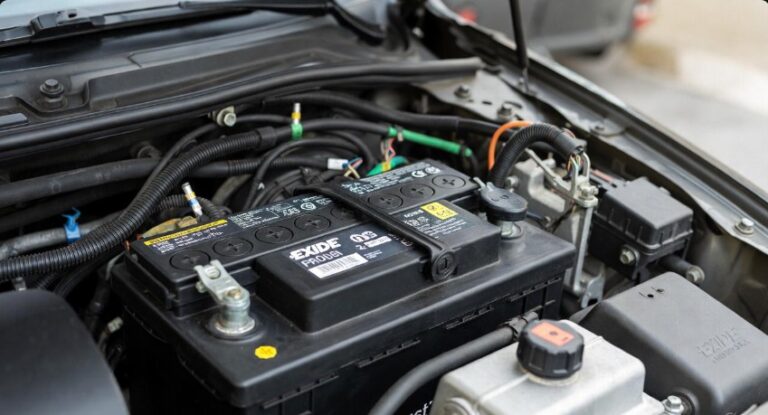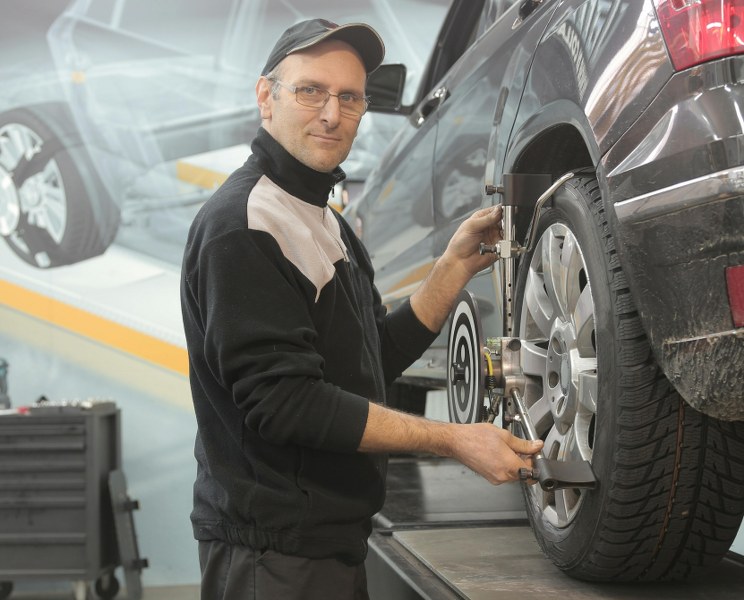When Plants on the Side of the Road Become Obstacles

Have you ever driven down a narrow road where branches brushed against your car or tall grass blocked your view? That small moment of uncertainty—wondering if something is coming around the bend—is a clear reminder that nature can sometimes intrude on our roads. When plants on the side of the road grow unchecked, they don’t just decorate the roadside—they can actually become obstacles for drivers. It may sound harmless at first, but even a few leaves in the wrong place can cause a chain reaction of distractions, blind spots, or accidents.
In this article, we’ll take a deep dive into how plants near the road affect driving conditions, visibility, and safety. We’ll explore the environmental and human sides of the issue, blending real-life scenarios, simple explanations, and practical tips. By the end, you’ll understand why something as ordinary as roadside plants deserves serious attention from both drivers and communities.
In This Article
- 1 The Beauty and the Risk: Nature’s Dual Role on the Roadside
- 2 When Plants Block Visibility: The Hidden Dangers
- 3 Environmental Factors: When Nature Grows Beyond Control
- 4 Psychological Impact on Drivers: Distractions and Anxiety
- 5 Real-Life Scenarios: When Green Turns Risky
- 6 Community Responsibility: Shared Care for Safer Roads
- 7 Technology and Maintenance: Smart Ways to Manage Roadside Growth
- 8 Environmental Balance: Keeping Green Without Losing Safety
- 9 Practical Tips for Drivers: Staying Safe Around Overgrown Roads
- 10 Why Awareness Matters More Than Ever
- 11 Conclusion: Respecting Nature While Staying Safe
The Beauty and the Risk: Nature’s Dual Role on the Roadside
It’s easy to appreciate the beauty of greenery as you drive. Lush trees, flowering bushes, and tall grass create a refreshing backdrop to what might otherwise be a dull road. They provide shade, prevent soil erosion, and support wildlife. But that same beauty can sometimes turn into a hazard when plants on the side of the road grow too close or too tall.
Imagine driving through a countryside lane where tree branches hang low over the road. A sudden gust of wind shakes them, scattering leaves onto your windshield. For a brief moment, your vision blurs. That’s all it takes for a potential accident. Overgrown vegetation can block signs, obscure road curves, or even hide pedestrians and animals. What was meant to beautify can quickly become a danger when left unmanaged.
Balancing nature’s charm and driver safety requires awareness and regular maintenance. It’s not just a government responsibility—it’s a shared duty among communities and individuals who use those roads daily.
When Plants Block Visibility: The Hidden Dangers
Visibility is one of the most critical aspects of safe driving. The ability to see what’s ahead, to the sides, and behind determines how fast you can react. When roadside plants grow without control, they can hide crucial details—like stop signs, speed limit boards, or even the shape of the road itself.
For example, a curve hidden behind overgrown bushes can take drivers by surprise. A child stepping out from behind tall grass could go unseen until it’s too late. This kind of situation isn’t rare; it happens daily in suburban and rural areas where maintenance is infrequent. Elephant Grass also blocks the road.
Blocked visibility isn’t only about what’s directly in front of you. Even shadows cast by large trees can create visual confusion, especially during dusk or dawn. The human eye adjusts poorly to sudden changes in brightness, making shaded patches seem like holes or bumps. That’s why keeping plants on the side of the road trimmed isn’t just cosmetic—it’s a safety necessity.
Environmental Factors: When Nature Grows Beyond Control
Plants grow fast, especially during rainy seasons. What starts as a harmless bush can, within weeks, expand into a road-covering thicket. Roads near forests, fields, or rivers are especially prone to such growth. Moisture, sunlight, and fertile soil give plants all they need to spread quickly.
Unchecked growth often leads to more than visual obstructions. The roots of large trees can break through pavement, causing uneven surfaces or potholes. Falling leaves block drainage systems, leading to waterlogging during rains. Vines can even wrap around power lines or road signs. All of these effects can create unsafe driving conditions, particularly for smaller vehicles and motorbikes.
Here’s a simple overview of how different types of plant growth impact roads:
| Type of Vegetation | Impact on Driving | Potential Risk Level |
| Tall grass and weeds | Block view of animals, signs, and pedestrians | Moderate |
| Tree branches and shrubs | Scratch vehicles, obscure road edges | High |
| Roots breaking pavement | Cause bumps or tire damage | High |
| Fallen leaves and debris | Reduce traction, hide potholes | Severe |
When seen together, these issues show how deeply intertwined nature and road safety are.
Psychological Impact on Drivers: Distractions and Anxiety
Driving requires focus. Even a moment’s distraction can change everything. When roadsides are cluttered with overgrown plants, the driver’s mind often tries to process too much information at once. This can create what experts call “visual overload.” Instead of focusing on the road, you start watching the movement of leaves, the flicker of shadows, or the unexpected narrowing of the road.
Over time, these minor distractions can cause fatigue. Many drivers subconsciously tense up when passing through heavily vegetated areas, especially if the space feels enclosed. That tension often leads to oversteering, delayed braking, or unnecessary acceleration.
The emotional response is real. A narrow road lined with dense greenery may feel cozy in daylight but intimidating at night. The darkness hides movement, making every rustle seem suspicious. Understanding this psychological effect is key to designing and maintaining safer roads. Driving should feel calm and predictable—not stressful or claustrophobic.
Real-Life Scenarios: When Green Turns Risky
Think of a rural road after heavy rainfall. The soil is soft, the grass grows quickly, and small plants creep toward the road. Within a few weeks, signs that once stood clearly visible are now half-covered. I’ve personally driven through areas like this, where the mirror brushes against tall weeds as I pass. There’s an uneasy feeling when you can’t see the corners clearly.
One particular incident stays in my memory. A sharp bend in a country road was completely hidden behind a mass of tall grass. A motorbike ahead of me nearly collided with a van coming from the opposite direction. No one was hurt, but it could have been worse. All because of plants that weren’t trimmed in time.
Such examples remind us that these aren’t abstract dangers. They happen to real people every day. Nature doesn’t intentionally create obstacles—but without proper care, it becomes one.
We often assume it’s the government’s job to maintain roadsides, but that’s only part of the truth. Local communities, landowners, and even frequent road users can play a role in ensuring safety. When you notice overgrown plants blocking a corner or hiding a sign, reporting it to local authorities helps everyone.
Small initiatives like community clean-up drives or tree-trimming events can make a visible difference. In many towns, residents voluntarily take care of road sections near their homes. It’s a spirit of shared responsibility that not only improves safety but also builds community trust.
Involving schools, youth groups, and local environmental organizations can further strengthen this effort. Education plays a big role—when people understand that plants on the side of the road can affect driving, they become more proactive about maintaining balance between nature and infrastructure.
Technology and Maintenance: Smart Ways to Manage Roadside Growth
Modern technology offers several solutions for managing roadside vegetation effectively. Drones, for instance, can be used to monitor growth patterns along highways. By capturing aerial images, maintenance teams can identify which areas need trimming or replanting.
Automated cutting machines and eco-friendly herbicides also help control vegetation without harming the ecosystem. GPS-based maintenance schedules ensure that each section of road receives attention regularly. This reduces both the cost and the risk of neglect.
For urban planners, choosing the right type of plants is equally important. Low-growing, slow-spreading species are ideal for roadsides. They enhance beauty without becoming a nuisance. A few examples include ornamental grasses and compact shrubs that require minimal trimming. Smart planning today prevents major issues tomorrow.
Environmental Balance: Keeping Green Without Losing Safety
While trimming and clearing are essential, overdoing it can harm the environment. Roads need greenery to reduce noise, absorb pollution, and maintain ecological balance. The goal isn’t to eliminate roadside plants but to manage them responsibly.
Creating buffer zones—where plants grow safely away from the road edge—can achieve this balance. Regular maintenance ensures visibility while preserving habitats for small animals and birds. Sustainable landscaping techniques, like using native plants, help keep growth predictable and easier to control.
In short, the key is harmony. Roads and plants can coexist beautifully if managed with foresight. When both nature and safety are respected, drivers enjoy a more pleasant and secure experience.
Practical Tips for Drivers: Staying Safe Around Overgrown Roads
Even with maintenance, some roads will always have more greenery than others. As drivers, we can adopt habits that make travel safer in such conditions.
Here are some quick tips:
- Slow down when you notice tall plants narrowing the road.
- Use headlights early, especially during dusk or in shaded areas.
- Stay centered in your lane; avoid drifting too close to the roadside.
- Keep your windshield clean to improve visibility.
- Report obstructions to local road maintenance authorities.
These small actions can make a big difference. Being alert and patient is the simplest way to adapt when nature challenges your path.
Why Awareness Matters More Than Ever
As urban areas expand and climate patterns shift, vegetation grows faster and denser than before. Ignoring it can lead to more frequent accidents and higher maintenance costs. Awareness—both among drivers and planners—is the first step toward prevention.
Educational campaigns and driver training programs can include modules on recognizing visual obstructions caused by plants. Drivers who understand the risks are less likely to underestimate them. Public discussions, even online, can encourage communities to take action and prioritize safety alongside environmental care.
Awareness transforms how we view roads—not just as infrastructure, but as living systems that require balance between human activity and natural growth.
Conclusion: Respecting Nature While Staying Safe
Driving is not only about steering a vehicle; it’s about coexisting with the world around us. The plants on the side of the road remind us that nature is always near, shaping our experiences in quiet but powerful ways. When they are managed properly, they bring beauty, shade, and a sense of calm. When ignored, they can become silent threats to safety.
Our responsibility is to maintain this delicate balance—by observing, reporting, and acting when necessary. Every trimmed branch and every cleared sign improves not just the road, but the journey itself. Safe driving begins with clear vision, and sometimes, that means making sure the road ahead isn’t hidden behind a wall of green.
In the end, respecting both nature and safety ensures smoother, safer, and more enjoyable drives for everyone.






